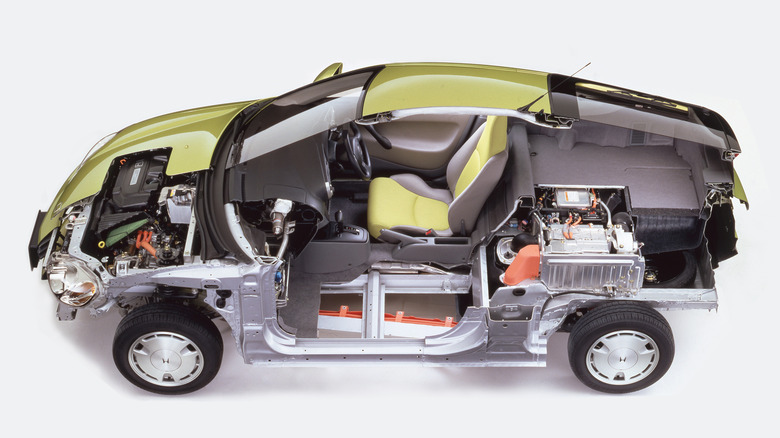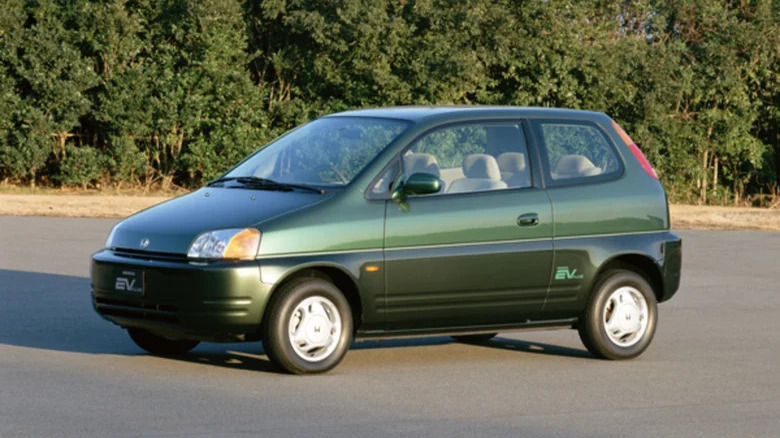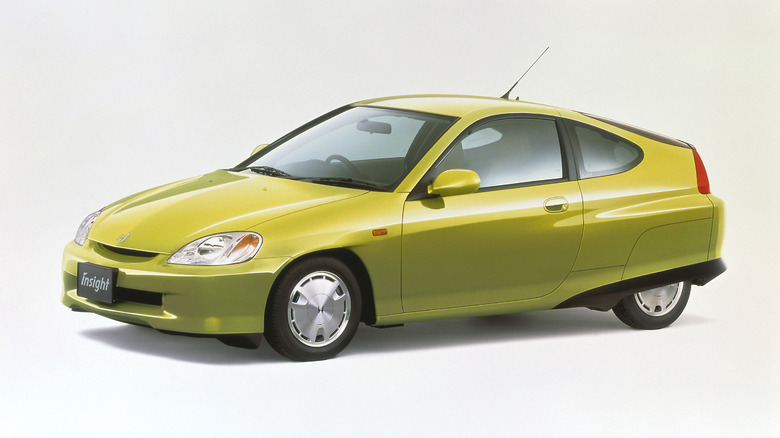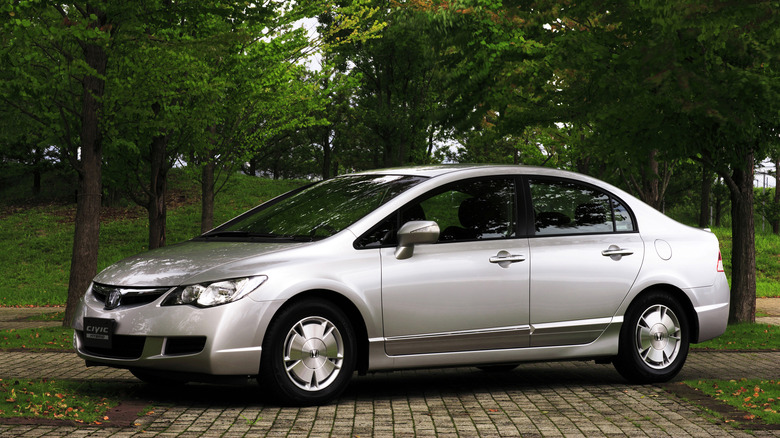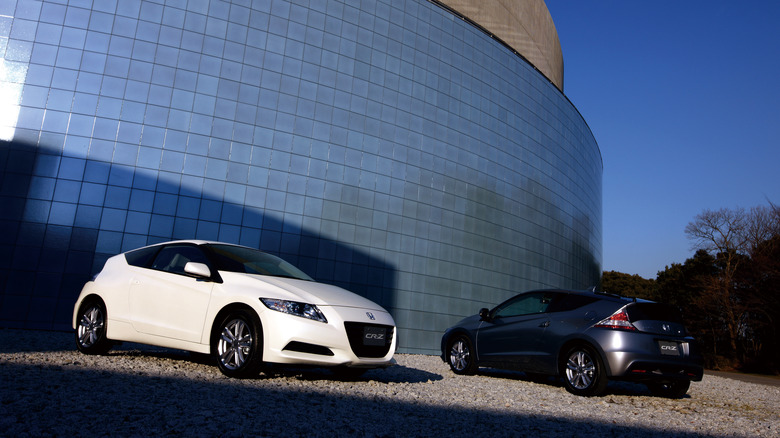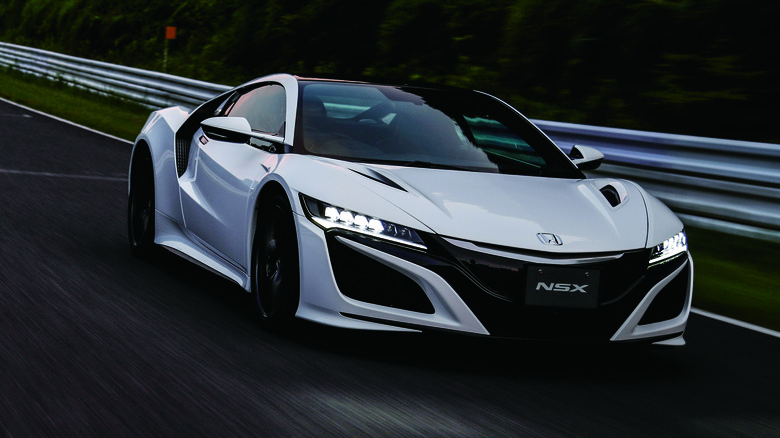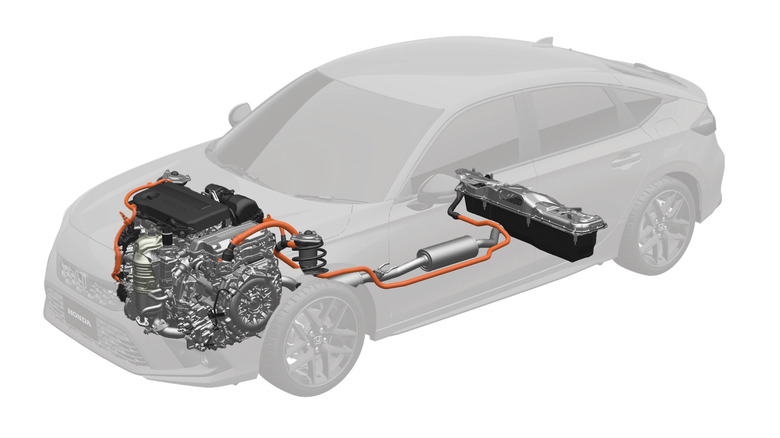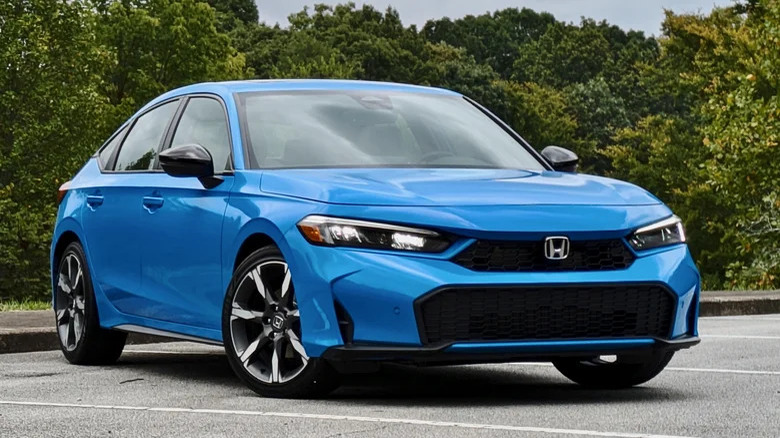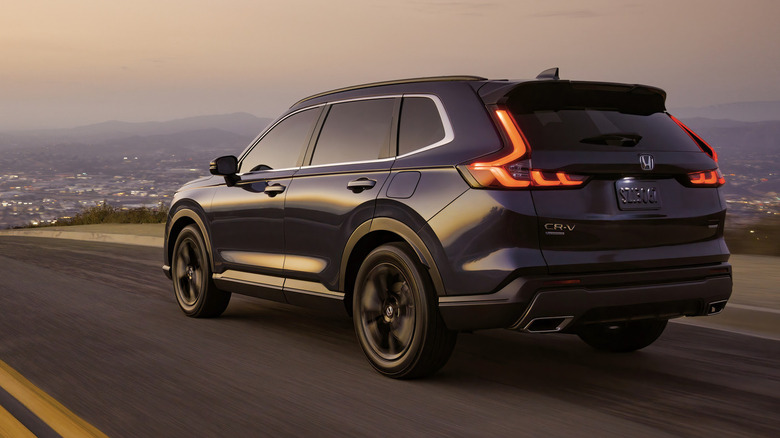The History Of Honda Hybrids: Their Evolution Explained
Honda celebrated a quarter century of making hybrid vehicles earlier in 2024, with its first production hybrid being unveiled back in 1999. The intervening years have proven particularly transformational for the automotive industry, with electrification going from being a relatively niche topic to being widely considered the future of the automobile. Throughout that period, the role of hybrids has evolved considerably, but Honda is one of few automakers that has remained consistently committed to hybrid technology over the decades.
That commitment doesn't look set to change for the foreseeable future, although like virtually every major player in the industry, Honda is eventually planning to phase out its gas-powered models in favor of all-electric vehicles. In the meantime, hybrid vehicles continue to play a vital role in the transition towards zero emissions, and Honda remains one of the leaders in the field. However, Honda's enviable position in the modern market might never have been were it not for the innovations made early in the brand's hybrid development program.
Honda's early electrification efforts
The Japanese automaker's first venture into electrification began in the late '80s, with its R&D team exploring various options for alternative energy sources to fossil fuels. Electric vehicles emerged as the most realistic idea, although at that point, battery technology was still in its infancy. Originally, Honda's intention was to develop pure electric vehicles, with the view that new clean air regulations in California would eventually provide Honda with a receptive market for its new EVs.
The brand's first limited production EV, the EV Plus (pictured above), launched in Japan and the U.S. in 1997. It was available only as a lease, which according to Honda, allowed it to "gather information on marketability and uncover EV-specific problems in an everyday environment." However, a change in the Californian regulations shortly after its launch saw EV targets softened in favor of cleaner gas-powered vehicles. Suddenly, it seemed that Honda's emerging market for EVs was no longer, and gradually, each EV Plus was sent back to Honda as its lease ran out.
Still, the developments from the EV project wouldn't go to waste. Honda had unveiled a hybrid concept car, the J-VX, in 1997, and showed off a second, unnamed prototype vehicle a year later. This second prototype would eventually reach production as the Insight. The Ni-MH batteries and brushless DC motor found in the hybrid prototype were closely related to those found in the EV Plus, but with the addition of a small gas engine.
The launch of the Insight
The production version of the Insight was unveiled in 1999, and looked very similar to the prototype that had debuted a year earlier. It featured the same hybrid powertrain, which Honda christened the Integrated Motor Assist (IMA) system. The brand had previously experimented with several different hybrid powertrain layouts, but the IMA system featured a brushless DC electric motor connected directly to the crankshaft of the gas engine. It gave the car a power boost when accelerating, and could regenerate the batteries during braking.
The Insight's Ni-MH batteries were fitted under the floor of the car's trunk, and at just 44 pounds, they added only minimal weight to the car. Keeping the Insight as lightweight as possible was a key focus throughout its development, with Honda employing extensive use of aluminum throughout its construction, as well as plastic composite. Aerodynamic refinement was also key to making the car as frugal as possible, with the Insight boasting a drag coefficient of 0.25. The result was that the Insight achieved around 69 American mpg, an exceptional figure for the time.
Electrifying the Civic
When Honda's R&D team were first exploring the practicalities of electric vehicles back in the late '80s, the first development mule created was an electric Honda Civic. It seems fitting, then, that the first major Honda nameplate to receive an electrified variant was also the Civic. It debuted for the 2001 model year and featured a refined version of the IMA system from the Insight. At launch, Honda claimed it was the "world's most fuel-efficient five-seater production gasoline vehicle," besting the Toyota Prius, which had launched in the American market the previous year.
A new generation of the Civic arrived for the 2006 model year, and with it, a new generation of the Civic Hybrid was also rolled out. At its heart was the latest iteration of the IMA hybrid powertrain, which featured some key improvements over its predecessors. The car's four-cylinder engine could switch off automatically while the car was cruising, allowing the car to drive on electric power only for short periods. The gas engine's fuel consumption was also reduced, with the car officially rated for 50 mpg.
The original Insight was never a huge sales success, selling around 17,000 models globally before being axed in 2006. The Civic Hybrid also trailed its main competitor, the Toyota Prius, in sales. A second generation Insight was launched in 2009 in a bid to counter the runaway success of the hybrid Toyota.
The hybrid gets sporty
While all of its previous hybrid models had focused on efficiency, by the late '00s, Honda realized that strategy alone couldn't win over enough buyers. In 2010, the brand unveiled the CR-Z, a sporty hybrid that it pitched as a spiritual successor to the CRX. However, it's perhaps better described as the eventual production version of the J-VX concept, which debuted back in 1997 and featured similar styling to the production CR-Z, as well as featuring an earlier version of the IMA powertrain.
Honda claimed that the car's electrically-assisted 1.5L engine offered power equivalent to a 2.0L with the added bonus of extra low speed torque, but buyers weren't convinced and sales were slow. Its official output of 130 horsepower was notably less than other affordable sporty cars of the era offered, and its low-slung design and compact cabin made it less practical than the brand's other hybrid cars.
By 2014, it was clear that something had to change. Honda's hybrid lineup couldn't compete against its rivals, and so the Insight and Euro-spec CR-Z were axed. The American market CR-Z was retired two years later, with Honda subsequently phasing out its traditional IMA powertrain in favor of not one but two new unique powertrain designs.
A hybrid halo car
To say that Honda had a lot to live up to with its second-generation NSX would be an understatement. The original generation was very influential both on the sports car world and the public perception of Japanese cars in general, and so the reborn version needed to be just as groundbreaking. The second-generation car was launched in 2016 and immediately divided opinions, since much of its groundbreaking appeal came in the form of the specially developed hybrid powertrain.
This powertrain featured three electric motors alongside the car's twin-turbocharged V6 engine, with one electric motor sending power to the rear wheels alongside the engine and two others driving each of the front wheels. Honda called the system Super Handling All-Wheel-Drive (SH-AWD), and to date, it remains a system unique to the NSX.
One common criticism of the car was that its hybrid powertrain and all-wheel-drive made going fast a little too easy. SlashGear contributor Victoria Scott described the experience as like driving "in a Need for Speed game with all of the assists on," but came away thoroughly won over by the NSX's ease of use. Others weren't so impressed, and the NSX never sold as well as Honda was hoping. It was retired in 2023, leaving the company without a true halo car.
Two motors are better than one
While one team of Honda engineers was busy crafting the system that went into the NSX, another was conjuring up a second new hybrid powertrain for the brand's more everyday cars. This powertrain is the one currently available in the brand's hybrid cars, features a two-motor setup, and is commonly referred to as e:HEV. It replaced the IMA powertrain, and features a very different layout. Instead of the electric motor taking a secondary role like in the IMA, it is the main motor that powers the wheels during urban driving in the e:HEV powertrain.
The gas engine, in contrast, spends most of its time serving as a generator for the electric motor. The car is only directly powered by the gas engine at sustained high speeds. At low speeds, the system is capable of driving on electric power only, using charge stored in the batteries. Honda says that the unique design of the system was developed as a way to take advantage of the inherent properties of electric and gas power, while simultaneously removing most of the shortcomings of both.
The e:HEV powertrain made its debut in the 2014 Accord Hybrid, and since 2016, has been used in every production Honda hybrid model aside from the NSX. As of this writing, it's in its fourth generation, with the latest version launching in the CR-V and Civic for the 2023 model year.
Honda's current hybrid lineup
Honda offers a range of hybrid vehicles in its lineup, with its current offerings in America consisting of the Civic Sedan Hybrid, Accord Hybrid, Civic Hatchback Hybrid, and CR-V Hybrid.
Its electrification strategy differs from many major manufacturers in that the automaker has always considered hybrid powertrains to be a necessary step on the road to widespread EV adoption. Even with its EV plans ramping up, there has been no indication from the company that its hybrid models will be going anywhere anytime soon.
This strategy appears to have been the right call, at least for now. Other leading automakers including Ford and Stellantis have announced in recent months that they are rethinking their aggressive EV rollouts in the face of stalling demand, instead redirecting their development efforts to expand their lineup of hybrids. Honda already offers hybrid variants of many of its popular models, and since its hybrid technology has already benefited from decades of development, it's in a great position to expand its hybrid lineup should the demand continue to increase.
The future of the Honda hybrid
According to the company's latest long-term plan, expanding its lineup of hybrids is indeed a priority for the automaker, but one that serves primarily to ensure the company keeps generating revenue to invest in EV development. It plans to sell only EV or FCEV vehicles by 2040, with the view that EVs will start to become more popular in the second half of the 2020s and will rise significantly in popularity throughout the 2030s. To cater to that demand, Honda plans to launch its 0 Series EVs from 2026, with the intention of having seven 0 Series models in its lineup by 2030.
However, its hybrid lineup won't be neglected during that period. The brand has promised a "renewal" of the current e:HEV architecture, but has not put a firm date on that renewal for now. It also plans to borrow the e-AWD system developed for its EVs to its hybrid lineup in the near future. If Honda sticks to its plan of becoming EV-only by 2040, then the brand's hybrid powertrains will be phased out accordingly before then. That may change, of course, if buyer demand doesn't match the automaker's expectations. Either way, Honda's expertise in both hybrid and electric vehicles means it has plenty of flexibility to respond to the market over the coming years.
